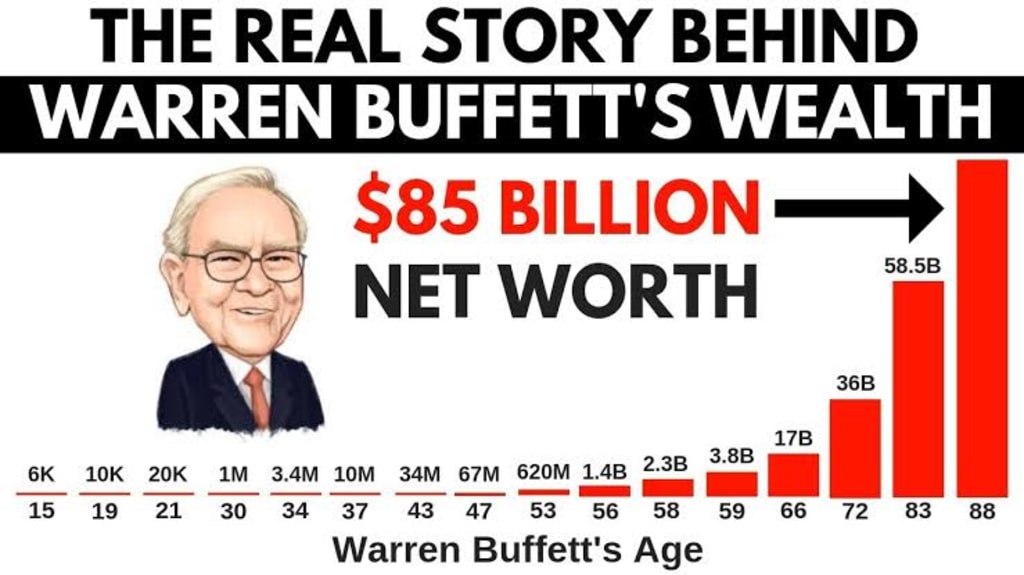How to Make Money In Stock
How to Make Money In Stock

There are several ways to make money in the stock market:
1. Buy low and sell high: This is the most basic strategy and involves purchasing stocks at a lower price and then selling them at a higher price to make a profit.
The "buy low, sell high" strategy is a common investment strategy that involves purchasing stocks at a lower price and then selling them at a higher price in order to make a profit. The idea behind this strategy is to take advantage of market fluctuations and capitalize on the natural ebb and flow of stock prices.
To implement this strategy, an investor would typically conduct research on a particular stock or market to identify undervalued opportunities. For example, they might look at a company's financial statements, industry trends, or analyst recommendations to determine if a stock is currently trading below its true value.
Once an undervalued opportunity has been identified, the investor would then purchase the stock at the lower price. They would then hold onto the stock and wait for its price to increase, potentially driven by positive news or market conditions, and then sell it at a higher price, resulting in a profit.
It's important to note that this strategy requires a lot of research and time to properly understand the market and the stock you are investing in. Additionally, it's also important to have a well-defined exit strategy, a plan for when to sell the stock, whether it be based on a target price or a specific time frame.
2. Dividend investing: Some companies pay dividends to their shareholders, which can provide a steady stream of income.
Dividend investing is a strategy that involves investing in stocks that pay dividends, which are regular payments made by a company to its shareholders. These dividends can provide a steady stream of income for investors, as they are typically paid out on a quarterly or annual basis.
When a company earns a profit, it can choose to either reinvest the money back into the business or distribute a portion of it to shareholders as dividends. Companies that consistently pay dividends are considered to be financially stable and have a history of strong earnings.
An investor who chooses to invest in dividend-paying stocks would typically look for companies with a history of paying and increasing dividends over time. They would then purchase shares in these companies and hold onto them to receive the dividends as they are paid out. Some investors may also reinvest the dividends to buy more shares, a strategy known as compounding, which can increase the investor's returns over time.
It's important to note that the dividends paid by a company can change over time, and dividends are not guaranteed. Dividends can be reduced or even suspended if a company is facing financial difficulties or wants to retain more earnings to invest in growth opportunities. Additionally, dividends are also subject to taxes, which must be taken into account when evaluating the potential returns.
3. Day trading: This involves buying and selling stocks within the same trading day in order to take advantage of short-term price movements.
Day trading is a strategy that involves buying and selling stocks within the same trading day in order to take advantage of short-term price movements. Day traders aim to profit from small price changes in a stock's value by buying and selling the stock multiple times within a single trading day.
To implement this strategy, a day trader would typically use technical analysis to identify short-term trends and patterns in the stock market or specific stocks. They would then use this information to make rapid buy and sell decisions throughout the day, in the hope of capturing small profits from each trade. Day traders often use leverage, which allows them to trade with more money than they have in their account, which can amplify their potential gains but also increase their risk.
It's important to note that day trading is a highly speculative and risky strategy and it's not suitable for everyone. Day traders are exposed to high levels of volatility and rapid price changes that can cause significant losses if a trade doesn't go as planned. Additionally, day trading requires a significant amount of time and attention, as well as a good understanding of the markets and the stocks being traded.
4. Investing in mutual funds or exchange-traded funds (ETFs): These can provide diversification and professional management.
Investing in mutual funds or exchange-traded funds (ETFs) is a strategy that can provide diversification and professional management.
Mutual funds are a type of investment vehicle that pools money from multiple investors to purchase a diversified portfolio of stocks, bonds, or other securities. Mutual funds are managed by professional money managers who use their expertise to select a diversified portfolio of assets to achieve a specific investment objective. By investing in a mutual fund, an individual investor can gain exposure to a diversified portfolio of assets, reducing the risk of investing in a single stock.
Exchange-traded funds (ETFs) are similar to mutual funds in that they also provide diversified exposure to a basket of assets, but they trade on a stock exchange like individual stocks. ETFs are also managed by professionals, but they can be traded throughout the day, like a stock, allowing investors to buy or sell ETF shares at any time the market is open.
Both mutual funds and ETFs can provide a level of diversification that's difficult for individual investors to achieve on their own. Diversification helps to spread risk across multiple assets, rather than concentrating it in one stock or sector, which can reduce the overall volatility of an investment portfolio. Additionally, by investing in these funds, an investor can also benefit from the expertise of professional money managers who are responsible for managing the fund, which can be beneficial for those who lack the time or expertise to manage their own portfolio.
It's important to note that the stock market is a risky investment and there is no guarantee of making a profit. It is important to conduct thorough research and consult with a financial advisor before making any investment decisions.
Yes, it is important to note that the stock market is a risky investment and there is no guarantee of making a profit. Stock prices can fluctuate based on a wide range of factors, such as economic conditions, company performance, and market sentiment. While the stock market can provide the potential for high returns, it also carries the risk of significant losses.
To mitigate the risk associated with investing in the stock market, it is important to conduct thorough research and consult with a financial advisor before making any investment decisions. This includes researching individual stocks, sectors, and the overall market, as well as understanding your own risk tolerance and investment goals.
Researching individual stocks, for example, would require an investor to look into the financial health of a company by analyzing its financial statements, such as income statement, balance sheet and cash flow statement, and also looking into the company's management, products, and competitors.
Additionally, consulting with a financial advisor can provide valuable insights and guidance on investment strategies and asset allocation. A financial advisor can also help create a well-diversified portfolio that aligns with your risk tolerance and investment goals.
It's important to keep in mind that no investment strategy can guarantee a profit or protect against loss and investing always carries a degree of risk, the key is to make informed decisions and to have a well-diversified portfolio that aligns with your risk tolerance and investment goals.






Comments
There are no comments for this story
Be the first to respond and start the conversation.